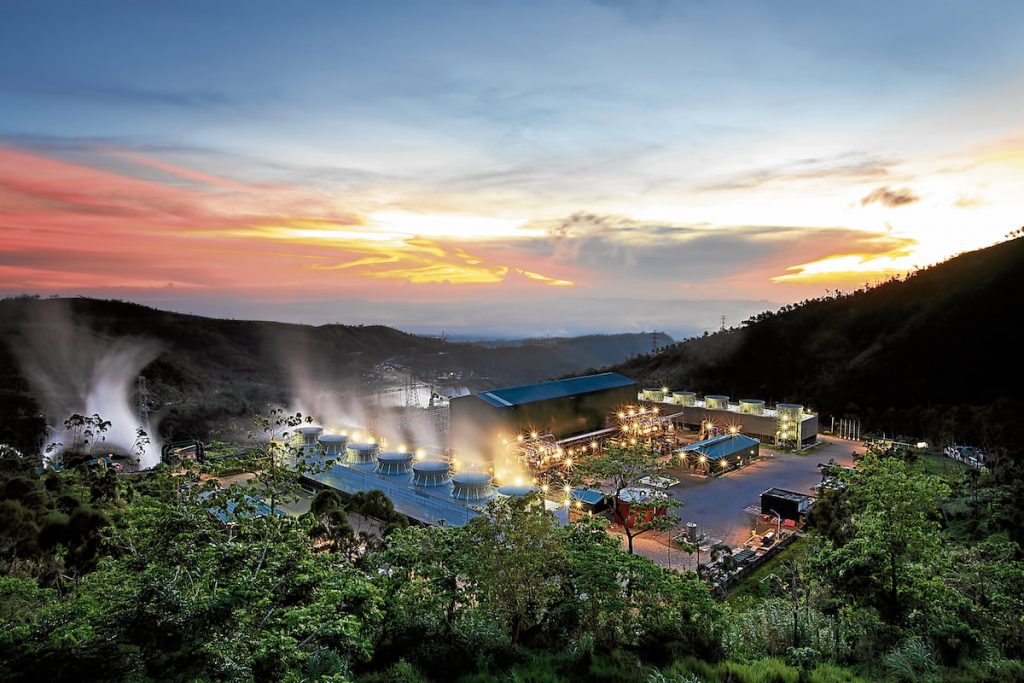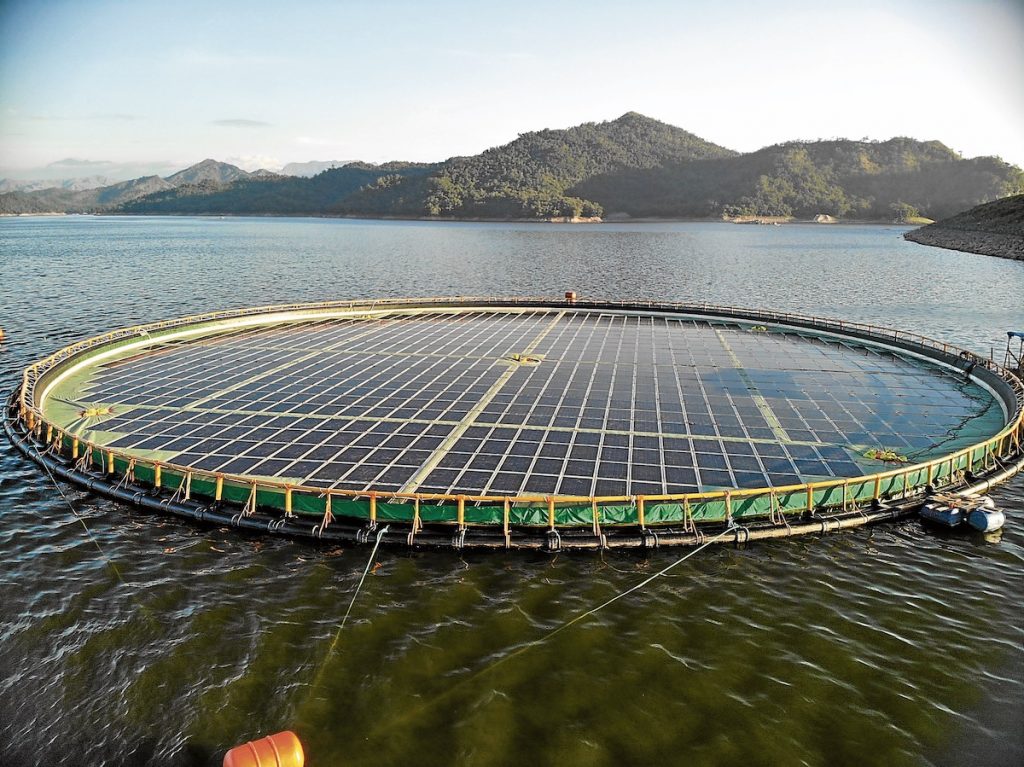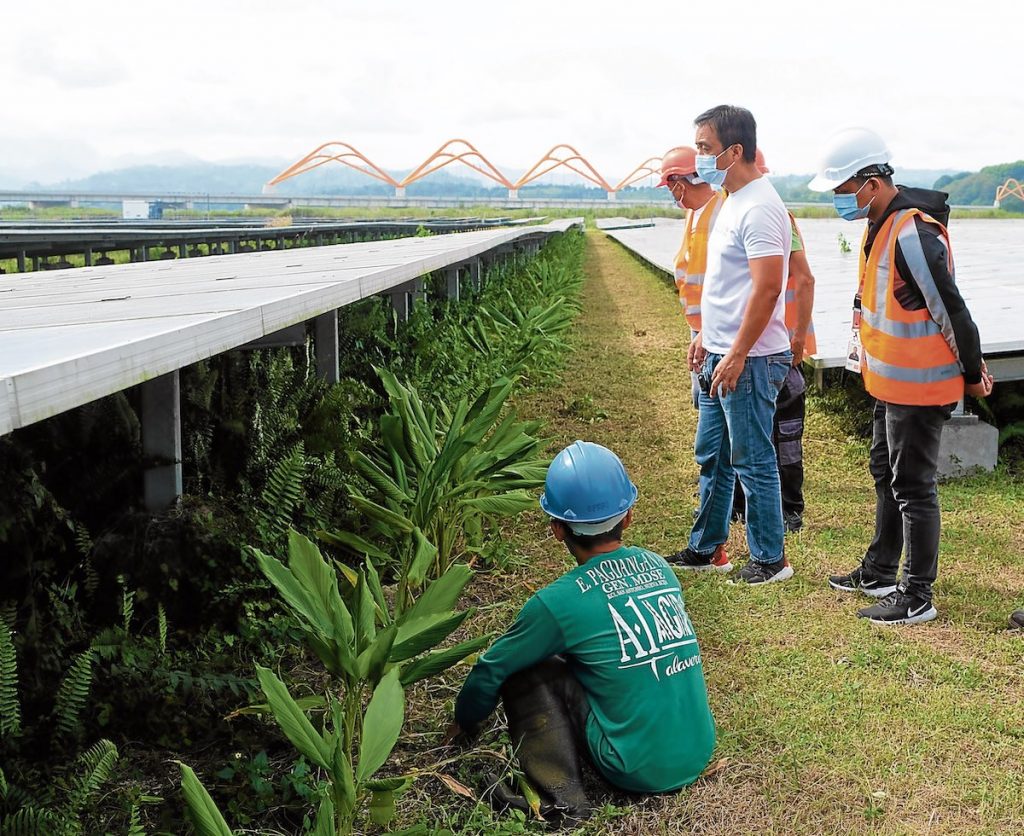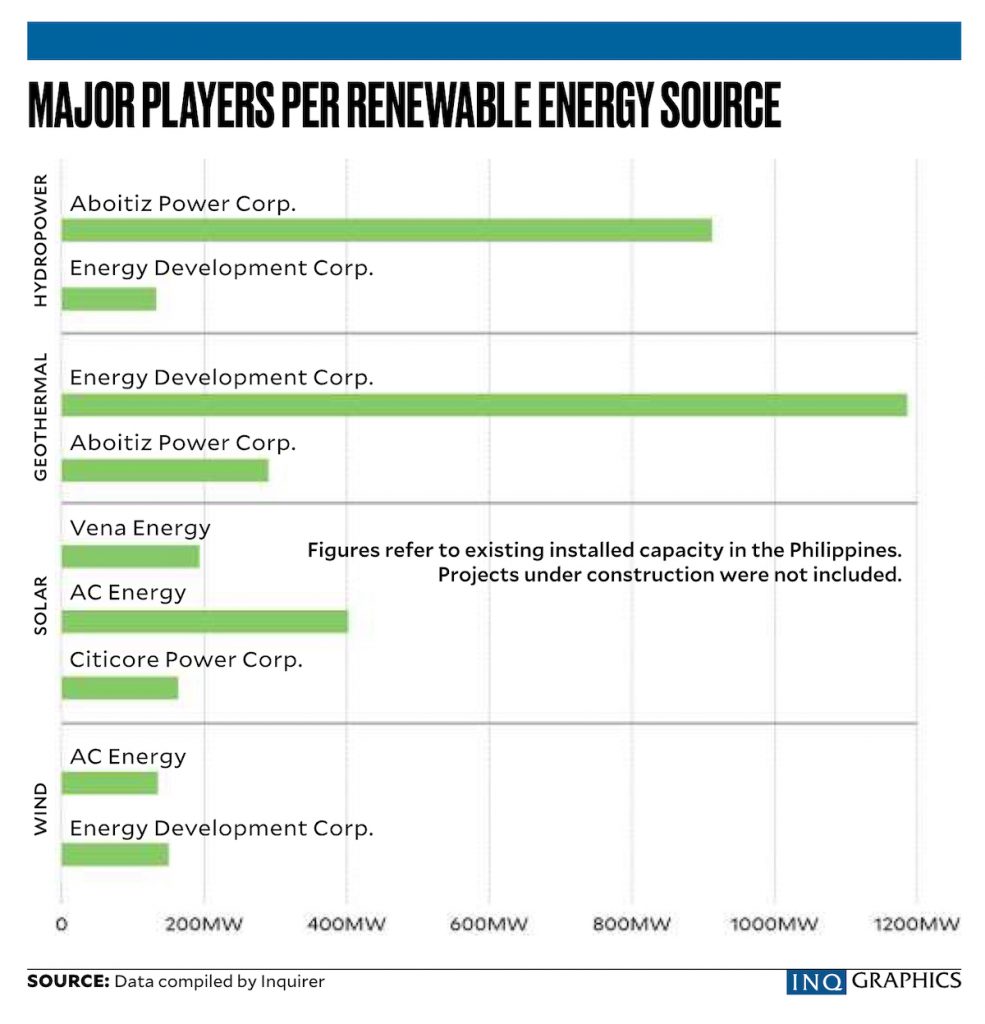
The country’s power players are leading the charge into renewable energy (RE), rolling out projects to meet growing demand while keeping an eye on the future with investments in innovation and new technologies.
These industry movers include AC Energy Corp., which is looking at proven solutions it can deploy at scale, and Aboitiz Power Corp., which has started to combine hydropower and solar solutions to increase capacity.
Citicore Power Inc. is looking at the business another way as it brings agriculture into the fold while Manila Electric Co. (Meralco) is building up its clean power portfolio while expanding the use of solar rooftops.
The companies are also investing in battery storage systems to increase the reliability of their power supply—one of the biggest constraints associated with renewable energy.
“With storage, we can store the power and release when you need it whether at night or when demand is high,” John Eric T. Francia, AC Energy president and CEO, told the Inquirer in an interview.

Geothermal – Unified Leyte Power Plants — CONTRIBUTED PHOTO
SE Asia is AC Energy’s stage
AC Energy, among the leaders in solar and wind power in the Philippines, is gunning to become the biggest listed renewables platform in Southeast Asia once it reaches its 5,000-megawatt goal by 2025.
To address intermittent power, he said the company was investing in industrial-scale lithium ion battery storage facilities, similar to the technology used in mobile devices and Tesla electric cars.
Francia said their 40-MW battery storage project beside the recently-opened 120-MW solar power plant in Alaminos, Laguna would be completed by the fourth quarter of 2022.
Aboitiz Power, which is targeting a 4,600-MW “cleanergy” portfolio by 2030, is also investing in battery storage facilities starting with its power projects in Luzon and Mindanao, said Maria Leene Camo, Aboitiz Power corporate communication supervisor, in an email.
For example, the group has completed site survey and basic engineering designs for its SN Aboitiz Power (SNAP) Magat battery energy storage system, Camo said.
‘Floating solar’ projects of Aboitiz Power
The SNAP-Magat owns and operates the Magat Plant with a capacity of 360 MW.
To maximize power output, Camo said they were developing another 150 MW of “floating solar” projects, which are anchored to the base of the dam, after the success of its pilot facility in 2019.

Aboitiz’s solar disc maximizes use of water surfaces
The solar panels are installed and arranged on large floating discs, whose design was inspired by the Amazon water lily, the company said.
Advantages to the project include maximizing the use of water surface area and reducing evaporation, which are important during dry periods such as dry spell or drought.
AC Energy and Aboitz Power are backed by diversified conglomerates Ayala Corp. and Aboitiz Equity Ventures.
Crops beneath Citicore’s solar panels
At the same time, rising power company Citicore Power, a sister firm of listed Megawide Construction Corp., is pursing innovations on its solar plants.
According to Citicore Power president Oliver Tan, the company introduced a “special coating” on its projects that allowed them to capture more sunlight even when skies were cloudy.

Citicore Power, which is targeting 1,500 MW of solar power capacity by 2025, sees its projects taking on an agricultural flair as it found a way to plant high-value crops such as turmeric beneath arrays of elevated solar panels.
Since solar plants require huge tracts of land, the company’s “agro-solar” concept will enable farmers to generate income within the same property.
“This is our humble way of contributing to ‘net zero emission’ movement and inclusive growth,” Tan said in an email.
Solar panels on every rooftop
Meralco, the country’s largest electricity distributor, is also building up its renewable capacity with a 1,500-MW target in the next 5-7 years.
Through Meralco PowerGen Corp., the company opened a 50MW solar power plant in Bulacan province last year. Moreover, affiliate Spectrum is widening solar panel installations across homes and businesses, notably the City of Dreams integrated casino along Manila Bay.
The partnership will involve the installation of 3,120 solar panels on the casino’s parking building—enough capacity to power 185 heavy-duty air conditioners.

Capital market plays
Alongside government regulations supporting the shift to cleaner energy sources, companies moving in this direction are getting a boost from investors.
Citicore Power is readying the listing of its solar assets on the Philippine Stock Exchange (PSE) through a pioneering energy-themed real estate investment trust offering that could raise up to P10 billion.
“The capital market plays an important catalyst to build more renewable energy and related infrastructure,” Tan said.
AC Energy, which also has wind and solar investments in Vietnam, Indonesia, Australia and India, was included in the benchmark PSE Index effective Aug. 16 this year after meeting stringent requirements.
Francia said the company had continuously invested in innovation and new projects since 2019. “I don’t think we will stop putting shovel to the ground,” he said.
And while the underlying philosophy at AC Energy was to build on technologies that were proven and scalable, the company was also keeping close tabs on emerging innovations.
He said AC Energy established a 5-MW RE Tech Hub in Bataan where testing was ongoing for around 30 different technologies focused on solar and energy storage.
Other innovations also come with natural advancements in technology, which the company learned from its wind farms.
“Bigger is better,” Francia said, explaining that the company was now building larger wind turbines since these were feasible to operate when wind speeds slowed down.
Offshore and even floating wind farms offered exciting prospects once costs fall and technology improves over the next decade, Francia said.
First Gen’s steam power
There were also new technologies that would make renewable sources such as geothermal power more reliable, said Federico Lopez,
CEO of First Gen Corp., which controls more than half of the country’s geothermal capacity under Energy Development Corp.
In a report published last Feb. 22 by IHS Markit, Lopez was quoted as saying the use of artificial technology and connected devices, known as the Internet of Things, were increasing efficiency in the energy sector.
He also discussed tools such as time of use, pricing and flexible demand responses to deal with power intermittency that was closely associated with renewable energy.
For Aboitiz, nonrenewable sources were still needed for dependable power but the gradual shift to clean power, enabled by technological innovation, was underway.
“To the extent that we will fully transition to renewable energy will depend on the technology advances in carbon capture, energy storage and other forms of energy generation,” Camo said.
“Right now, together with our partners, we are the largest owner and operator of renewable energy in the country, based on installed capacity, and we intend to continue to lead the clean energy transition into the future,” she added.
This story was first published in the August 27, 2021 issue of the Philippine Daily Inquirer’s Road to Clean Energy special report.







